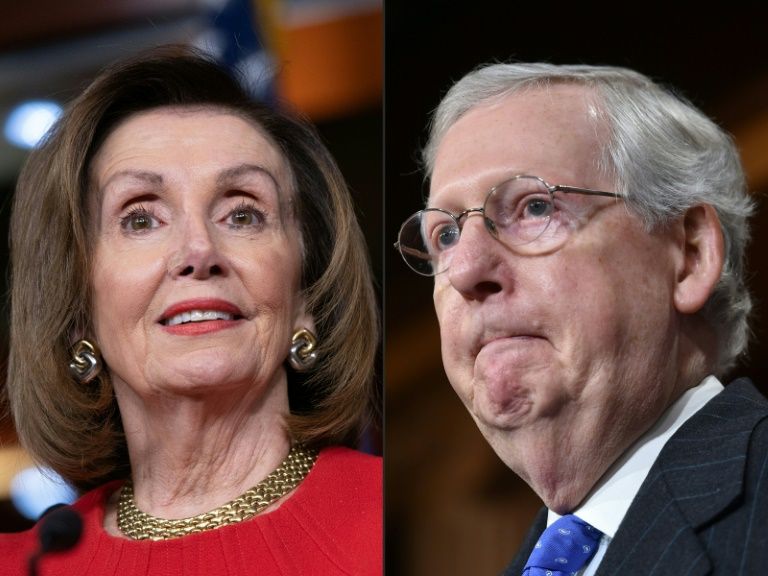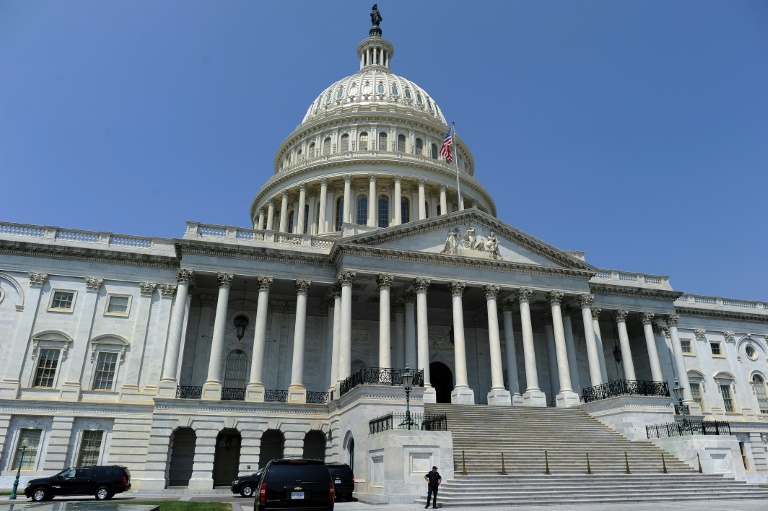In late March, as the COVID-19 pandemic hit the US for the first time, elected officials in Washington, DC scrambled to pass legislation to address a tsunami of problems that would result from the pandemic. One such issue was the impending wave of mass layoffs and unemployment as a result of state lockdowns intended to slow the spread of the virus.
In the CARES Act that passed in late March, Congress expanded unemployment insurance benefits to include a $600 payment per week for unemployed people. It was intended to help individuals and families sustain themselves through lockdown, but the expanded unemployment provisions had a mighty expiration date: July 31, which is at the end of this week.
So far, Democrats and Republicans in Congress have not agreed on a viable extension of the unemployment program, leaving millions locked out of extended unemployment benefits beginning this week. The Globe Post spoke to Annelies Goger, a Rubenstein Fellow in the Metropolitan Policy Program at Brookings, about what this means for individuals, families, and the economy.
The interview has been lightly edited for length and clarity.
The Globe Post: How did expanded unemployment benefits begin earlier in this pandemic and what was their intended purpose?
Annelies Goger: Well, because we have generally underfunded unemployment insurance systems for about 35 years, when the pandemic struck, there would have been a lot of displaced workers who would not have qualified for unemployment insurance. Those that did qualify would have received pretty low benefit levels.
So, the coverage of unemployment has gone down over time, partly because after the Great Recession, big unemployment insurance (UI) trust funds were insolvent and so in order to replace the funding, which comes from taxes that are levied on employers, they generally would either cut the benefit amount, reduce the duration of benefits, or increase the income thresholds and other requirements that you would need to be able to qualify to receive the benefits.
By the time the pandemic hit, a lot of states were not qualifying most of the types of workers that were most heavily impacted by the pandemic. Typically, the people that would not be qualified under the regular employment would be self-employed individuals, people who work part-time, people who are just entering the labor force. Let’s say they were out of the labor force having a child or they were incarcerated and then they were coming back into the market. If they had to have a certain level of history at that job, then they wouldn’t qualify.
And oftentimes, students wouldn’t qualify for unemployment either. What that means is: a lot of the jobs that were impacted by the pandemic were impacting a lot of people in the service sector who tend to have lower wages, more part-time workers, [and] tipped workers whose incomes are not fully reported in most states.
GDP falls by record 33%, and more than 1.43M people file for unemployment benefits for the first time.https://t.co/B2p3zYxBzO
— MSNBC (@MSNBC) July 30, 2020
So, Congress implemented three new programs at the end of March, in order to make sure that we could go through a lockdown where people are required to not be working, and they wouldn’t lose their home or be unable to eat.
The first program allows people that normally wouldn’t qualify because of the income, or self-employed or gig workers, to qualify for a new program called pandemic unemployment insurance.
The second program added an additional $600 a week to the regular benefit amount. The normal benefit amounts range a lot by state but generally replace only about 41 percent of someone’s income. So, if you, under normal circumstances, did qualify for UI you’d only be getting that much income every month. And you know you would have trouble paying your rent for example, probably. So they increased that by a flat $600 rate for everyone to bring it closer to — it was based on the median income of low wage workers — to get people up to that level.
And then, the third piece allowed people to qualify for an extended duration of benefits of 13 additional weeks.
Instead of having a safety net that was automatically triggered into action when the unemployment went up, which would be probably what most people think a safety net should be, we had to have a whole three new programs implemented on the fly. And normally when a new program is implemented it’s actually quite a long process: the legislation is approved, then the Department of Labor issues guidance, and then the states have to figure out how they’re gonna adapt the new guidance and the new law to their system which is very different, generally across each state.
That’s what happens in early stages and as a result, because of all the time that it took to implement that, there was a lot of confusion among people about who qualified and certainly, there was a huge volume of people hitting these systems while they were also trying to implement new programs that ended up in a lot of delays and bottlenecks. The data systems that operate these programs are generally quite old and outdated, and they have a lot of issues.
Actually, those bottlenecks continue even today. There have been a lot of people that have been having to wait many weeks to get their benefit checks and that initially caused a lot of problems. There were a lot of lines at food pantries and things like that. I’m very concerned that we’re gonna start to see that again in the coming weeks.
The Globe Post: The benefits end this week, on July 31. What is the danger of these benefits ending now?
Annelies Goger: Well the danger is going to be felt at two levels. So, the first level is the aggregate level of consumption. Most of the evidence that I’ve seen to date for the pandemic has been that having that additional $600 actually led to an increase in consumption nationally. That’s helped to actually counteract the effects of unemployment because when consumption stays up, then more people are employed.
The extra $600 a week that Congress gave to the millions of Americans who lost their jobs due to the coronavirus pandemic played a big role in keeping the US economy afloat during the steepest downturn on record https://t.co/c1lZixZC1D
— CNN (@CNN) July 30, 2020
The other effect that it has is on the individual level, obviously. The average benefit level, for most states — they vary quite a lot — but, for example, in Washington DC, the maximum benefit is $444 a week and, in California, I think it’s about $450 a week. That’s pretty low considering the rent. If you live in a major city and you’re paying $2,000 in rent, you’re gonna have a hard time making that payment.
It’s really dangerous because they’re also lifting a lot of the eviction moratoriums at the moment, and some of the programs that were in place to pause people from getting kicked off of their utility services during the lockdown. All of these things are lifting at the same time and people will be left pretty much without utilities, without housing. I’m expecting to see a really huge surge in applications for food benefits and for food pantries very soon.
The Globe Post: What is the macro impact of these benefits ending, on the scale of the whole US economy?
Annelies Goger: Well, when consumption goes down, employers aren’t going to be as likely to hire people, so that kind of doubles down. When you have a negative cycle of consumption, that means you have lower [levels of] people buying things and people aren’t employed on top of that, so then the consumption is going to go down even more because the employment goes down.
It’s basically a chain effect where in a very deep crisis, you want to try to spend more money so that you can stimulate growth in the economy to get that cycle to go the other direction and start hiring people because you want dollars to be flowing through the local economy in particular.
Especially considering that we closed a lot of retail stores and restaurants, that’s all capital that’s [normally] getting locally circulated. And now, people are spending money through Amazon and Walmart online and that money is not staying in the local community. Even though, you could definitely say that some of the few employers that are hiring are Amazon and Walmart and folks that deliver for them.
So, at least there is some growth, but there’s not a lot of capital circulating, there’s not a lot of revenue coming into local communities. There hasn’t been substantial, sufficient fiscal aid to states and local areas and, so you’re seeing the revenues go down at a time when you have a crisis intensifying and cases going up, which is very concerning.

The Globe Post: In what form do you expect expanded unemployment will be renewed? The House proposal includes an extension of the existing benefits program and the Senate proposal includes a $200 benefit and later a benefit worth 70 percent of your previous income.
Annelies Goger: I really don’t know what to expect to see at this point. It’s hard to see them coming to agreement in any kind of short timeframe, which is very concerning.
I think that the merits of the $600, or even a proposal to continue a flat increase like a $500 [payment], all of that is easier for states to implement. They’ve already stopped those payments, but they could start them back up without too much additional work.
The suggestion to switch to a percentage of previous wage, in my opinion, is extremely impractical given the capacity to implement that. We have really spent a lot of the last 35 years where states have created totally different systems for administering unemployment. So, you can’t easily copy and paste one thing from one state to the other. They all collect different data, use different qualifying formulas, have different ways of determining benefit amounts, and there’s not a lot of standardization around it.
It’s not easy to say just do this new calculation when some states don’t even collect the information that you would need to make that calculation. Currently, you still have people waiting weeks and weeks to get their checks. So, my concern is that the house is on fire and you’re trying to rearrange the furniture, which I think is not the best way to support states. To get them to get their systems functioning better should be the very top priority right now.
Make sure that when people are going to be stuck in this adjudication process — let’s say something goes wrong in their application — they shouldn’t be waiting there for two months because that’s bad for employers, it’s bad for workers, it’s bad for everyone. That person might be collecting and then have to be told that they have to give money back and that creates a lot of issues.
I think that we really need to prioritize making sure these systems can function again — putting the fire out — and then we can talk about what we need to build a process through which we can get a more complex percentage of previous earnings. But I really think it’s impractical to say, “Oh, we’re going to spend four months implementing that new formula,” and then the program currently only lasts till the end of December.
Senate Republicans' unemployment plan hurts these groups the most:
Lower earners
Minorities, women and teenagers
Southerners
Residents of high-tax, high-cost states
Part-time workershttps://t.co/W3F8Fy8u6p— Kyle Griffin (@kylegriffin1) July 30, 2020
If it comes online in October and it goes out of commission at the end of December, [then] we just spend a whole lot of time doing that. It’s just a huge amount of wasted effort when the house is burning down and we need to get people fed, and I think that that’s just really impractical.
I hope that they consider, if they want to reduce the benefit, at least do it in a way that’s not going to create a whole lot of other issues with different states that are already really struggling to get these benefits out to people in a timely and accurate fashion.
The Globe Post: Are there any additional items in the current pandemic unemployment realm that you would like to address?
Annelies Goger: The only thing I would add is when you create new programs in the middle of a crisis there’s always gray areas. And, so it creates a lot of confusion and I think states need to be emphasizing how to communicate especially with people that don’t have internet access. Like, who’s eligible for these programs, what their rules are, what the rules are for employers.
I think we need more information going out to people, especially people that don’t have internet access. The confusion is definitely contributing to a lot of problems. I think more clear information about who is and isn’t eligible in every state; more transparency about all of this would really help clear that up a lot, and then, more clarity around the fact that if an employer asks someone to come back to work that they had previously laid off, that worker can’t say no unless they have a qualifying reason.
I think there’s been a lot of misrepresented coverage of that issue. And there may be people who think they can continue collecting benefits and then the state might come back two minutes later and say “you owe us all that money back.”
We need to get clear information about all of this, and people need to understand that even if their claim is stuck in adjudication, they need to have some confidence once they get a decision, “Is this money I can keep? Or is this money that I’m going to be asked for later to give back?”
I think there’s going to be in the coming months, more cases like that where people are asked to give money back and they didn’t realize that they weren’t allowed to be getting it in the first place. I think it’s going to probably result in lots of lawsuits and other issues so I just generally think that the confusion is one of the biggest problems right now.
























